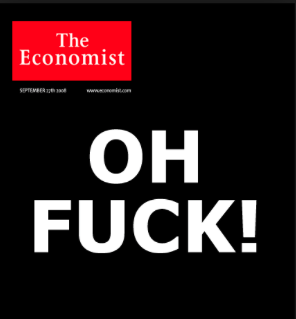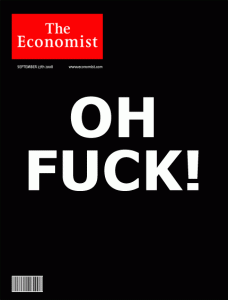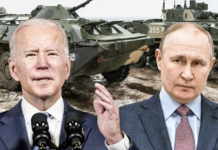Normative economics is the economics of value‑judgement and belief. It’s neither social science nor art. It is culture, and culture is a mix of good and bad. Sixteenth and seventeenth century western culture gave us witch burnings, religious wars on a scale that makes Jihad Johnny look not so bad, global circumnavigation, the rebirth of science, double-entry bookkeeping, and some quite impressive art.
Normative economics is about what people believe and assume to be good in our material lives, and therefore true. We contrast normative economics – the economics of belief – with the positive economics of cause and effect. People believe that money is wealth unless it’s debased; a deep-seated belief, that leads to the idea that large-scale ‘debasement’ (‘quantitative easing’ in twenty-first century language) inevitably leads to an inflationary process. Observation of cause and effect suggests otherwise.
People believe that debt is bad and credit is good, never minding that they are the same thing seen from different perspectives. Many people believe that economic growth is good and that inflation is bad. People believe that work is good and therefore more work must be better. And they believe that paid work is better than unpaid work. They believe much the same about thrift as they do about work. People believe that selling is a benefit and buying is a cost. I could easily go on.
Journalists are people who generally share the same cultural beliefs that most of the rest of us cherish.
Politics is meant to be normative. We vote for the people that say they will do more of what we think is good, and less of what we think is bad. Economics however is not meant to be normative; it’s meant to be scientific. Scientific economists may be able to prescribe a means to increase economic growth. But they cannot say that increased growth is always good. They can say that more growth is good if the benefits of more growth are greater than the costs of more growth. But they cannot easily measure those benefits and costs in any scientific sense. Politicians can argue that the benefits of some policy may be greater than the costs, but only because it is their job to apply value judgements, and because they stand to lose their jobs if the net benefits of their policies are not apparent to their employers.
—————————-
To get quick comparative economic information I often go to a ‘journalistic’ website – www.tradingeconomics.com – that, like Wikipedia, is convenient. But it’s a double-edged sword to unleash on students. Brief commentaries that come with the statistics are infused with normative interpretations.
What is most scary is the use of Excel-style formatting, using shades of green shading to indicate ‘good’ and shades of red to indicate ‘bad’. Let’s look at some of the good. (We note of course that these stats are updated continuously so the numbers I give here may not be the same for you.)
On inflation, the higher the number the more bad the statistic is painted. Conversely, the lower the number the better the statistic is painted. The winner of the 2015 inflation award is [drum-roll] … ‘Syria’, with -29% (ie 29% deflation). A distant runner-up is Lebanon, followed closely by Rwanda, Greece and Somalia. (Reserve Banks know better of course than the authors of Trading Economics about the huge dangers of deflation. But, as we will see, they have no idea how to prevent deflation. The alleged links between money and inflation fall well into the camp of culture; not the camp of science.)
The United States is in annual deflation now. Its inflation is falling as its economy returns to significant growth and high spending. Definitely not what the textbooks claim should happen.
A given inflation rate is neither good nor bad; it’s only high or low. Under normal circumstances steady inflation of two or three percent a year is probably ideal (though anything above two percent is shaded red in Trading Economics). But under contexts of huge credit-debt imbalances, somewhat higher rates of inflation are needed to stabilise the financial ship.
In some circumstances economic growth is good; in others it is bad. It depends on the costs. Productivity is essentially a ratio of outputs to inputs; tantamount to a ratio of benefits to costs. Thus increased productivity, if measured properly, is by definition good. Productivity increases with negative economic growth if inputs decrease faster than outputs.
Top five for economic growth are currently South Sudan (13.1%), Sierra Leone (13%), Ethiopia (10.4%), Turkmenistan (10.3%), and Ivory Coast (9.9%). I could happily visit Ethiopia or Ivory Coast, though their unemployment rates of 17.5% and 15.7% are worrying. Not so sure about the others though. Is Sierra Leone growing due to the expansion of medical services? Its unemployment is just 3.4%. Possibly it is in part because the medical services are not restoring enough sick people to labour force status.
On interest rates, high is treated by Trading Economics as good; low as bad. Switzerland and Denmark share the booby prizes here, each with interest rates of -0.75% (yes, minus). (Both have deflation, in part I would argue because their interest rates are so low.) Winners, at over 20%, are Belarus, Malawi, The Gambia, Argentina, and Ghana. Russia is on 15%. Sierra Leone is at a comparatively low 10%. Belarus (0.5%) is just pipped by Cambodia and Qatar for the lowest unemployment. High interest rates appear to be doing some good in Belarus!
On government debt to GDP, Japan is easily the most red, though Greece is catching up. For Japan, high government debt is a solution, not a problem. That debt is easily serviced, even if it is technically a Ponzi scheme. There is no deceit involved. Japanese savers like to lend to their government at near-zero interest rates, happy in the knowledge that the Japanese government has no difficulty attracting funds. Greece could service its government debt also, if the rest of the Eurozone countries allowed Greek incomes (and therefore taxes) to grow. Five years of austerity has achieved nothing. Austerity policies are based on belief (ie on culture), not science.
The western countries with the lowest government debt (as a percent of GDP) are, as we should expect, the ones with the highest private sector debt. Estonia is a particularly good example. New Zealand and Australia have low government debt for similar reasons. New Zealand’s is the same as Switzerland’s, though for different reasons.
On the government’s Budget balance, green shading is awarded to countries with governments running surpluses. Not surprisingly, four of the five biggest surplus governments are small countries with lots of oil. Then there is the Republic of the Congo [Brazzaville, not Kinshasa], running a 12.1% government surplus. For the government of such a poor country to have a government that so miserly is a huge shame. Public thrift on this level is what cost Romania’s Nicolai Ceausescu his life on Christmas Day in 1989.
The austerity countries of Europe continue to run much larger Budget deficits than most countries with relatively free spending households; countries such as New Zealand and the USA.
The current account of the balance of payments is always a strange one to make normative judgements upon. Many people believe that all countries should run current account surpluses year-after-year. It’s logically impossible of course. If spending is less than earnings in some countries then by definition it must be more in other counties. The economic problem is supposed to be the finiteness of goods and services. Yet it’s the deficit counties who have eased this problem, by spending more than they earn with the full and ongoing encouragement of the countries which earn more than they spend.
To any economic commentator with some appreciation of the zero-sum constraint, success here (on the balance of payments) is scoring close to zero. Yet Trading Economics gives the big green to the high surplus countries; countries with oil, and with the most miserly people on the planet. In the latter category come Macao, Singapore, Switzerland, Taiwan, Netherlands, Germany, Denmark and Sweden. And Ireland, which has embraced personal austerity much as St Paul was converted by God’s light on the road to Damascus.
—————————-
To finish, I would like to comment on “Uncharted Waters”, by journalist Patrick Smellie in the NZ Listener of 7 February 2015. He says “we live in strange times”. Too right, given my account above. Then he say the US “central bank threw trillions of dollars of made-up money” to reignite the economy. What other kind of money is there, other than “made-up money”? Except for miniscule amounts of coin, money is all made-up by double-entry bookkeeping. The main reason, initially, for central banks (rather than commercial banks) making-up lots of money was to support asset prices. There would be sufficient means to buy assets for sale for something comparable to the prices the owners of those assets paid for them. Later on ‘Quantitative Easing’ (QE) was undertaken by the monetary authorities to get people to borrow and spend, even when the governments of some of those countries were asking people to save more and spend less. Finally (and especially in Japan), QE was done in an attempt to create inflation.
QE has had precisely the opposite effect to the effect most normative commentators had expected. It is in our cultural DNA to believe that more money means more inflation. Indeed Japan did get some inflation (2.4%), thanks to a big fall in the Yen. It’s now a cheap country to visit, and to eat in. But for the world as a whole, low interest rates are reducing production costs, and are substantially reducing the sizes of dividends that company owners are demanding. Cheap easy money is taking us into, as Smellie says, “uncharted waters”. (Well, not really unchartered to those who know their history of the seventeenth and nineteenth centuries, and the early 1930s.)
Smellie goes on to say that “cranking-up the money-printing presses” creates “vast new debts that only future generations or … inflation can hope to cure”. Sure the future generations are in increased debt to themselves, it’s the nature of double-entry bookkeeping. (Smellie does not say who he thinks the young ones are in debt to.) Is it a huge problem to be in debt to oneself? The journalist only looks at one side of the ledger, and sees a problem that isn’t there. (He’s right though, that inflation can render solvent an otherwise financially insolvent world.)
Further on Smellie notes: “households and businesses are savers now, rather than spenders, a huge shift from a decade ago … governments [on the other hand] may not be able to control their debts …”. First, the truth is that in most of the capitalist world households and especially businesses were savers a decade ago. It’s just that the scale of private saving increased substantially this decade over the last.
Second, Smellie’s use of the words “may not” reveals that he does not understand the basics of borrowing and lending. The correct words are “can not”. If you divide the world into two parts, private and public, and if the private part is saving (running surpluses) then the public part must by definition be dis-saving (running deficits). It’s a global ‘zero-sum game’, no matter how much we might believe or wish that it isn’t. Thus governments can only run surpluses when the private sector runs deficits. Austerity cannot achieve its goals; it’s a logical impossibility. Thus Estonia and New Zealand have low government debt and high private debt. Greece has high government deficits precisely because its private sector is being forced to save. When the private part is in surplus, the public part must be in equal deficit. As Margaret Atwood noted in her book Payback, debtor and creditor are “joined at the hip”.
Let’s have more science, and less superstition, in our economic discourse. Emphasise the positive, not the normative.







It seems to me that QE did create a lot of inflation, just not in things that are included in consumer price indexes – the traditional measure to inflation.
Real estate, stocks, etc have increased in price a lot lately, is that not inflation?
Thus the problem of deflation is that QE created more money for the rich, but not enough for the poor.
Buying financial assets is saving, not spending. QE prevented financial asset prices from falling. New money is injected into the economy when banks (especially central banks) buy assets. In practice it allowed the rich to hold money as a form of asset.
Increased nequality and miserliness mean that more income is directed into holding assets rather than buying stuff. Money has become one of those assets, and, as Keynes showed, with deflation money becomes an increasingly attractive asset.
The inflationary danger occurs if too many people holding money as a form of saving suddenly decide to spend that money. Those people would be competing with workers and capitalists for goods and services which the economy could supply only some of.
Money itself is not inflationary. It is the decision by many people simultaneously to switch from a saving strategy to a spending strategy – eg to spend their hoards of financial assets – that sparks inflation. Inflation will then occur – and on a substantial scale – if assets are already held as money, or if the asset hoards can be easily converted to money without those hoards losing value.
At present there is no sign of any huge switch from saving to spending. There is no present sign that people already with substantial holdings of financial assets wish to liquidate those assets in favour of goods and services. The ructions that do take place are about changes in the preferred mixes of the assets that make up the hoards of the rich.
The magma chamber of the inflationary super-volcano is those asset hoards, not the quantity of money in the banking system. QE has pacified any rumblings of that volcano. It’s one volcano that’s not about to blow. The dangers lurk elsewhere; implosion rather than explosion. The forces that drive the market economy are too weak, not too strong.
To clarify, inflation in economics is a process of rising prices of newly produced goods and services. It is neither about the prices of financial assets nor other items that already exist. So a surge in the prices of second-hand bicycles is not inflation.
Unspent money is a financial asset. So is anything else, such as land or second-hand art, that serves as a means of parking income. Asset prices are inflating (financial inflation but not economic inflation) because too much income is being parked and not enough is being spent. So simultaneous asset price inflation and consumer price deflation are compatible, if not complementary.
To clarify, inflation in economics is a process of rising prices of newly produced goods and services. It is neither about the prices of financial assets nor other items that already exist. So a surge in the prices of second-hand bicycles is not inflation.
Unspent money is a financial asset. So is anything else, such as land or second-hand art, that serves as a means of parking income. Asset prices are inflating (financial inflation but not economic inflation) because too much income is being parked and not enough is being spent. So simultaneous asset price inflation and consumer price deflation are compatible, if not complementary.
Throw a bit of money around (printed paper, coins or mostly digital numbers created as “credit”), and the common “mice” come running like to a morsel of cheese thrown in front of them.
That is in very basic terms how the whole fiscal and “economic” system based on finance works. “Money” or credit is created to motivate people, to do things, that create “growth”, being nothing but measured activity, and most people see only the show around them, not the ones pulling the strings, let alone the whole complex machinery.
So it is very easy to “drill” the minds of the common masses, in their usual ignorance, to focus only on those so much quoted statistics we get fed every day, week, month and year.
Put on pressure and the mice fight each other, rather than work out a plan to deal with challenges more constructively and smartly. In the worst case scenario they attack each other and eat each other, same as rats. I fear in some ways we humans are no different there.
House prices sky rocket, but what is done, who stands and protests and takes action? Nobody, they all “adapt”, compete, work harder, try to save harder, to get that morsel of cheese they need.
Same with jobs, with competition there, with all else.
With all progress and technological and other advances, the endless statistics and other information are too much for most to deal with, so they do not even read them, do not process them, as they cannot do so, given physical and mental limits, especially in a time of endless bombardment with “information”, the worst in commercial advertising.
I see no solution to the misery we face, unless the addicted get forced off the misleading, addictive information and messages, that only keep them trapped in their virtual slavery. To stop that, the MSM and other “mis-informers” and manipulators need to be neutralised or taken out, somehow.
And balanced, true informing needs to take over.
Now there is a thought.
So true Mike. So much of NZ is becoming dog eat dog.
“The forces that drive the market economy are too weak, not too strong.”
There is certainly always an explanation that appears to clarify why the market economy fails to produce desirable public goods. Having witnessed thirty years of market failures from the Rogergnomic reforms I no longer credit such facile excuses.
The market is readily pervertable by capital, and poorly regulated markets deliver very poor value to honest participants. A government worthy of support will strictly regulate markets rather than accepting these practically infinite series of lame excuses for non-performance.
When I say that “The forces that drive the market economy are too weak, not too strong” (comment above; not main article), I mean that market forces are too weak to drive markets. I am not making any normative comment about the virtues of the pure market economy.
I do however accept markets as an important reality; and I do not have sufficient imagination to conceive of a workable economic order that suppresses market forces.
We might consider which of the following is least unlikely to deliver dystopian outcomes: market forces too weak (persistently weak spending on goods and services); market forces far too strong (persistent and substantial overspending on goods and services creating serious inflation); or market forces of demand that balance the constraints of supply.
The balanced scenario not only averts implosion or explosion, it also creates the conditions (adequate or better incomes of ordinary households) through which households can choose to reduce their labour supply while still maintaining a balance between supply and demand. And this scenario can create the conditions through which people are willing to contribute to the creation of public goods; the vision is one of shared economic security with the help of public and collective goods, rather than one of private economic security through excessive private ‘rainy-day’ saving.
Something like public equity dividends or a universal basic income is necessary to allow this resource conservation-enabling balance to take place. Public equity benefits strengthen market forces that are too weak, making it easier for workers to say ‘no’ to exploitative labour contracts, and (through the resulting higher hourly wage rates) allow us to choose to work fewer hours, to save less, and to spend less on things we value less than our time.
I think a UBI is inevitable now. It is the solution. There is much talk about it coming from Oversea’s to. It is only a matter of time.
So Philomena Cunk has it nailed?
https://www.youtube.com/watch?v=Z-YKw8w-e50
With respect to the current looming threat of deflation, the implosion to which I think Mr Rankin is referring, I recommend Michael Pettis ” The great rebalancing : trade, conflict, and the perilous road ahead for the world economy.
Comments are closed.